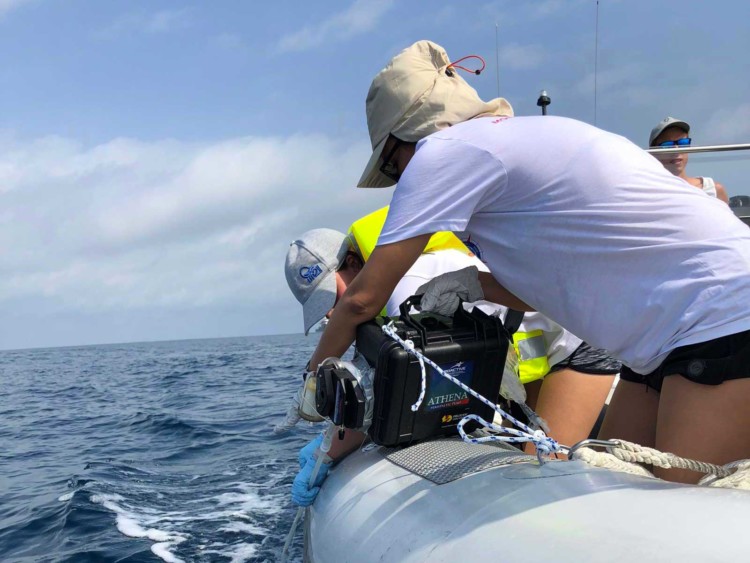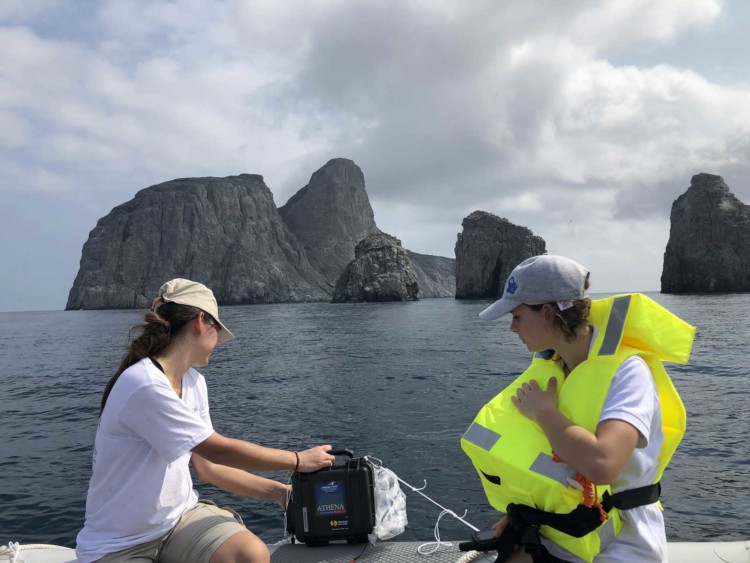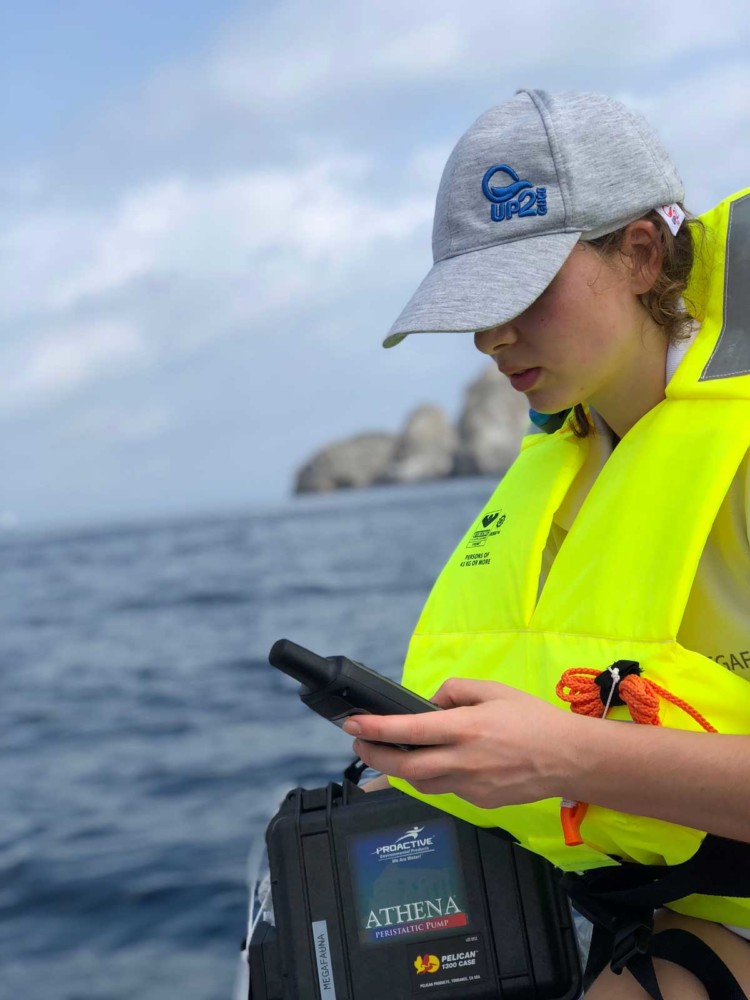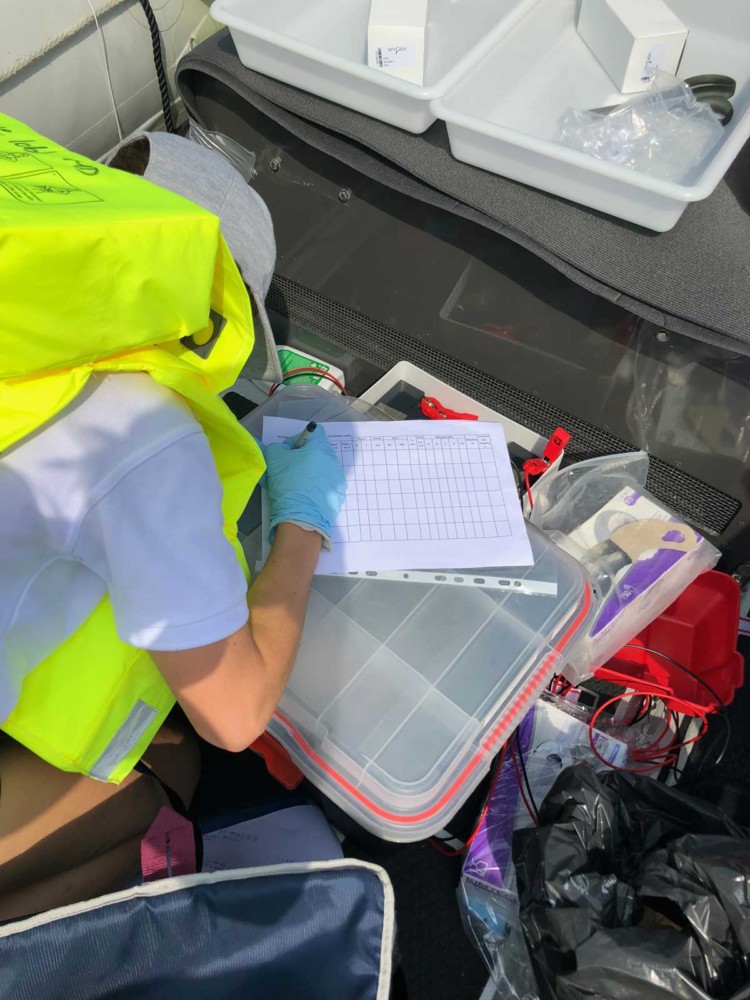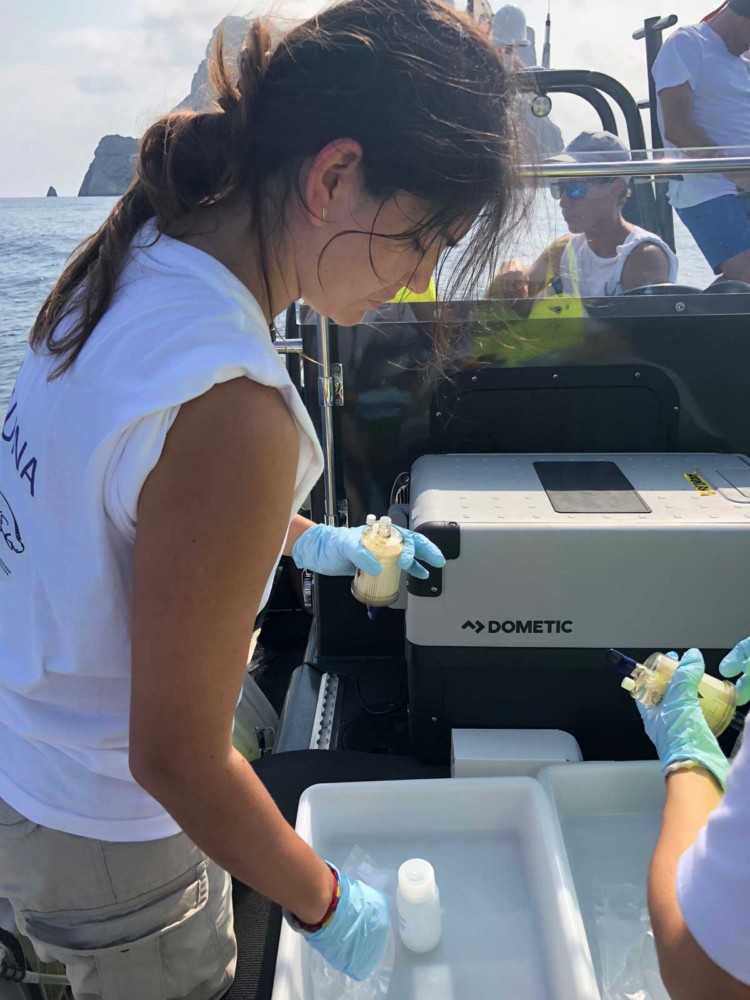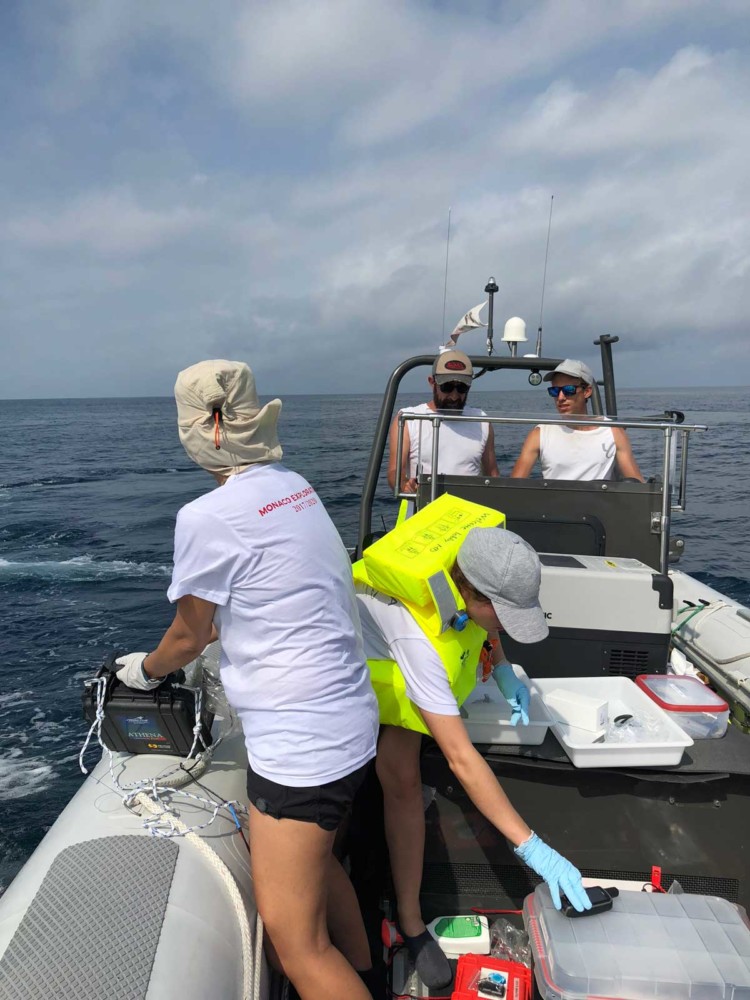
During our time in Malpelo we are focusing on two main initiatives: tagging hammerhead sharks with Fundación Malpelo, and biodiversity research via environmental DNA (filtering and sampling) and underwater camera footage with the Megafauna Consortium and Invemar Colombia.
I spent the day with part of the Megafauna Consortium team who filtered water to collect samples for eDNA analysis.
This is a group of university teams and businesses working together toward the goal of understanding biodiversity. This includes researching what processes shape biodiversity, as well as forecasting what factors such as climate change, overfishing, invasive species, pollution, etc. affect biodiversity and how.
The team onboard:
- Loïc Pellissier from ETH Zurich
- Régis Hocdé from IRD
- Florine Hadjadj from University of Montpellier
- Caludia Restrepo Ortiz from CNRS
- Jean Baptiste Juhel from University of Montpellier

Today the team worked to filter 30L of seawater over 5,000m transects multiple times. Each filter runs for 30 minutes. The megafauna team is looking specifically for information about sharks, rays, marine turtles, and marine mammals.
The filtering process
GPS coordinates are set to map the transect area and the lab area on the tender is completely sterilized to remove any trace of DNA.

The team prepares the filters and the batteries that run them.

The water is run through the filter for 30-minute increments. The team ensures the filters do not touch anything during the entire process.
After 30 minutes have passed and the area has been filtered, the team records the work, preserves the filter, and sets up for the next run.
The filters will be stored under refrigeration until they are brought to the laboratory in France where the samples will be amplified and sequencing will be applied to read the DNA and provide the team with the results.
